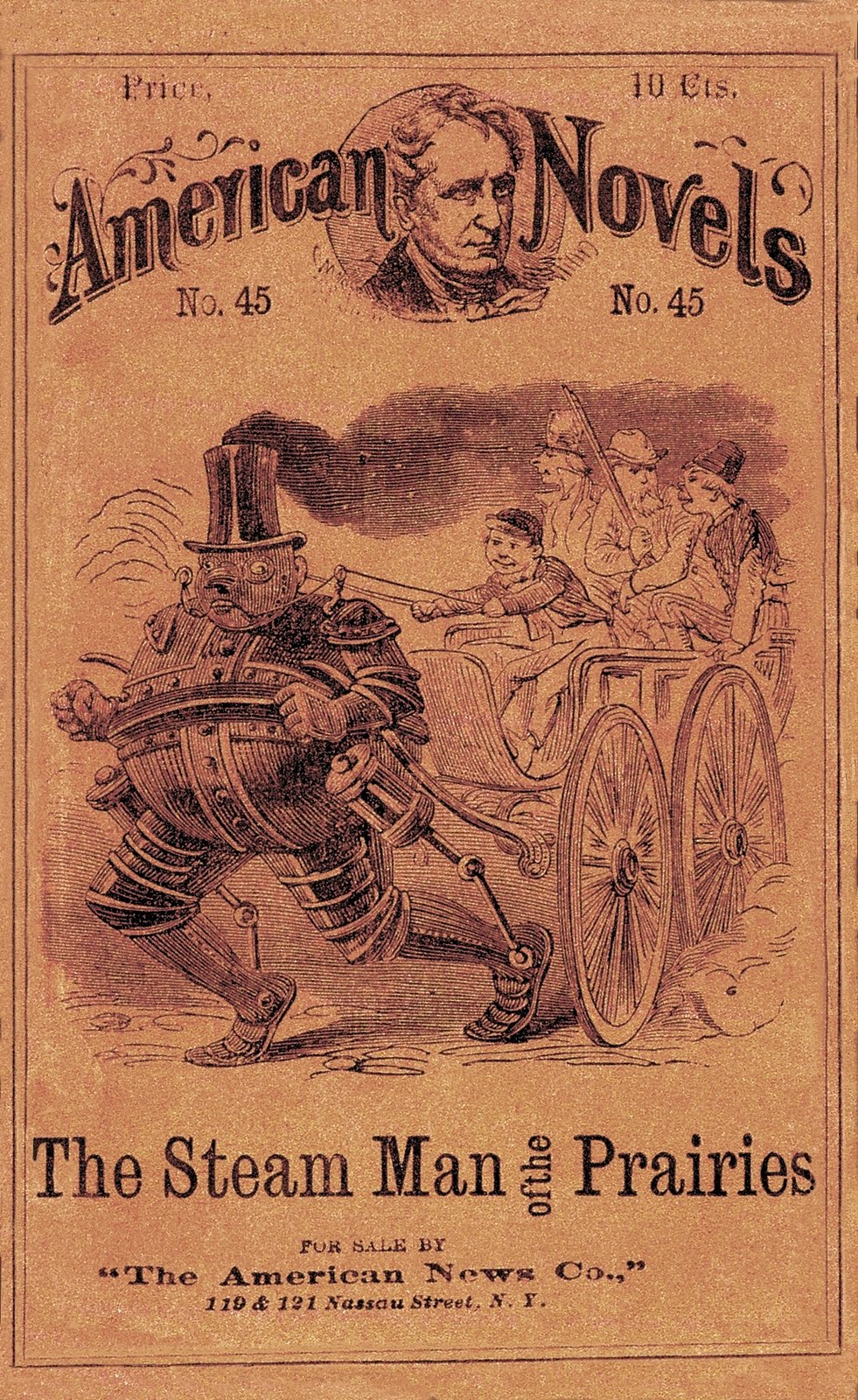In the realm of science fiction and early concepts of robotics, the “Steam Man of the Prairies” is considered one of the most important and influential characters. Created by Edward S. Ellis and introduced in his 1868 novel, this fictional invention captured the imaginations of readers and paved the way for the concept of robots and mechanical humans in literature and beyond.
The Steam Man, depicted as a steam-powered automaton designed to pull a carriage, was a pioneering idea that predated modern robotics and inspired future generations to dream of mechanical beings. This article explores the influence of the Steam Man on the development of robotics and its role as a precursor to the modern portrayal of robots in science fiction.
What is The Steam Man of the Prairies?
“The Steam Man of the Prairies” is a significant work in the genre of science fiction, particularly as it introduces one of the first instances of a humanoid robot in literature. Published in 1868, this novella captures the spirit of innovation and adventure during the American industrial revolution.
The Plot
The story revolves around an ingenious inventor, Johnny Brainerd, who is described as a small, fifteen-year-old hunchback with a brilliant mind. Johnny constructs the Steam Man, an extraordinary invention that is essentially a large, steam-powered, mechanical man. This robot is capable of pulling a wagon at high speeds, a remarkable feat for the era in which the story is set.
The Adventures of the Steam Man
The narrative follows Johnny and his Steam Man across the American prairies. Accompanied by a group of adventurers, they journey through various challenges, using the Steam Man to outpace horse-mounted bandits and navigate the vast landscapes of the Wild West. The Steam Man proves to be not just a marvel of engineering but also an invaluable asset in their escapades.
Characteristics of the Steam Man
The Steam Man is described in detail as being made of iron, with a stove in its chest to produce steam and a whistle on its head. Standing over ten feet tall, its legs move via pistons, and it is controlled by a series of levers and a pilot platform. The Steam Man’s design and functionality captivated readers, showcasing a mechanical being that was both powerful and human-like in appearance.
Influence and Reception
“The Steam Man of the Prairies” quickly became popular, especially among young readers. It not only entertained but also sparked the imagination, opening up possibilities of mechanization and future inventions. The novella played a foundational role in the genre of science fiction, influencing subsequent stories featuring robots and mechanical beings.
The Influence of The Steam Man of the Prairies on Robotics
While “The Steam Man of the Prairies” by Edward S. Ellis is a work of fiction, its impact on the field of robotics and the genre of science fiction is undeniable. Published in 1868, this story introduced one of the earliest concepts of a humanoid machine, setting the stage for the modern interpretation of robots and influencing the trajectory of robotics in literature and technology.
Pioneering the Concept of Humanoid Robots
The Steam Man, as envisioned by Ellis, was a groundbreaking idea. It presented a mechanical being capable of performing tasks and exhibiting human-like traits, albeit in a primitive form. This concept laid the foundation for the idea of robots – mechanical entities that could mimic human actions and assist in various tasks.
Inspiring Future Innovations
The notion of a steam-powered automaton not only captured the imagination of readers but also inspired inventors and writers. The Steam Man can be seen as a precursor to the robots and androids that populate modern science fiction. Its influence is evident in the way robots have been portrayed in literature and films, evolving from simple mechanical helpers to complex artificial intelligence.
Robotics in Literature and Pop Culture
Following “The Steam Man of the Prairies,” the idea of robots and mechanical beings became a staple in science fiction. This genre has continually explored the relationship between humans and technology, often using robots as a central theme. The Steam Man paved the way for iconic characters in science fiction and popular culture, influencing the portrayal of robots as both allies and adversaries of humans.
Who Was Edward S. Ellis?
Edward Sylvester Ellis, a name not immediately recognizable to many, was a pivotal figure in early American literature, particularly in the genre of science fiction. Born in 1840 in Ohio, Ellis was a prolific writer, best known for penning “The Steam Man of the Prairies,” which earned him a place in the annals of science fiction history.
A Prolific Career in Writing
Edward S. Ellis’s career as an author was both extensive and varied. He initially started writing at a young age, with a focus on boys’ adventure stories. His works often encapsulated the spirit of the American frontier, echoing the themes of exploration and adventure that were prevalent during his time.
“The Steam Man of the Prairies” and Its Impact
Ellis’s most renowned work, “The Steam Man of the Prairies,” published in 1868, is considered one of the earliest examples of American science fiction. The novella was groundbreaking for its time, introducing the concept of a steam-powered robot. The story captured the imagination of a nation fascinated by the possibilities of technology and mechanization, coming at a time when the Industrial Revolution was transforming the American landscape.
Contributions to Science Fiction and Literature
While Ellis may not have achieved the same level of fame as some of his contemporaries, his contribution to the genre of science fiction is significant. “The Steam Man of the Prairies” laid the groundwork for future science fiction narratives that featured advanced machinery and inventions. His work is seen as a precursor to the steampunk genre, blending elements of science fiction with the technological aesthetic of the 19th century.
A Diverse Literary Legacy
Beyond science fiction, Ellis authored over a hundred books under various pseudonyms. His works ranged from adventure stories for young readers to historical fiction, reflecting his versatility as a writer. Despite the wide range of his writing, it is “The Steam Man of the Prairies” that remains his most enduring legacy.
Conclusion
“The Steam Man of the Prairies” may be a fictional tale from the 19th century, but its influence resonates in the field of robotics and science fiction. It stands as a testament to the power of imagination and its ability to inspire real-world advancements in technology and storytelling. The Steam Man, as one of the earliest humanoid machines in literature, set a precedent for the endless possibilities of robotics, both in the real world and in the realms of fiction.


